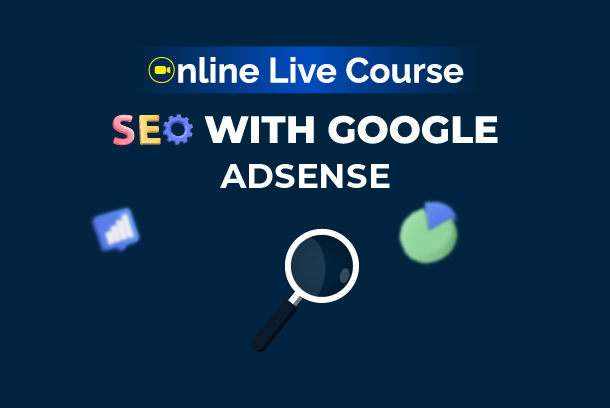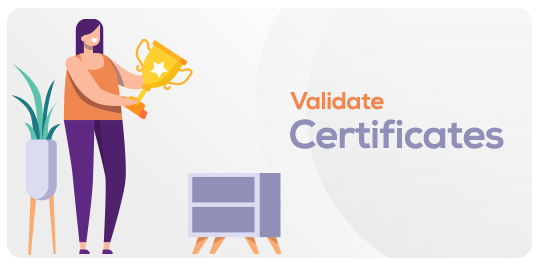এসইও এবং গুগল এডসেন্স - অনলাইন লাইভ ব্যাচ
in ONLINE LIVE COURSESWhat you will learn?
Keyword Research
Google Search Console
High-Quality Images
Quality Content
স্বদেশ শিক্ষানবিদের প্রশাসন করা প্রশিক্ষণ
নিজস্ব গবেষণা এবং অধ্যয়ন
গুরুত্বপূর্ণ সূচনা বানানো
About this course
SEO (Search Engine Optimization) is the relationship of a web site with various search engines. Its main goal is to prepare the website according to the algorithm of the search engine and bring it to the first row in the search results.
SEO is one of the means of promotion in the internet world. There are millions of websites in the world. Among these huge number of websites, getting your website to rank in search engines is a challenging matter. So SEO is the only way to bring the website to the top of the search engines.
By doing SEO, you can work on ranking your own or company's website starting from offering services as a freelancer. Our course has practical guidelines on how to earn from platforms like Fiver Marketplace and Google Ads.
So join this course without delay. Our course is the best for 60+ lessons and real life guidelines for freelancing.
Requirements
High-Quality Content
Analytics and Tracking
Strategic Ad Placement
Keyword Research
FAQ
Comments (0)
#What is a search engine?
A search engine is a digital tool that helps users find information on the internet by displaying relevant web pages based on their search queries
#How does a search engine work?
A search engine functions by scouring the internet with web crawlers, indexing website content, and then employing complex algorithms to deliver relevant search results based on user queries
#SEO, or Search Engine Optimization, refers to the practice of optimizing a website's content, structure, and other elements to improve its visibility and ranking in search engine results pages (SERPs). The goal of SEO is to enhance organic (non-paid) traffic by aligning a website with search engine algorithms, ultimately leading to increased online visibility, more website visitors, and potentially higher conversion rates
#How does SEO work?
SEO involves optimizing website elements, content, and technical aspects to align with search engine algorithms, improving a site's visibility and ranking in search results, thus driving organic traffic and enhancing online presence
#Introduction to keyword research
Keyword research is the process of identifying and selecting the most relevant and valuable search terms that users enter into search engines, guiding your content optimization strategy for improved online visibility
# How to find related SEO terms and related keywords
Related SEO terms and keywords can be found using tools like Google Keyword Planner, SEMrush, and by analyzing competitors and industry forums for relevant terms. Prioritize high search volume and relevance for effective SEO
#Keyword research tools
Utilize tools like Google Keyword Planner, SEMrush, and Ahrefs for effective keyword research and to identify relevant SEO terms
#Analyzing top organic keywords of competitors
Examine competitors' top organic keywords to uncover valuable insights for your SEO strategy
#What is KGR (Keyword Golden Ratio)?
The Keyword Golden Ratio (KGR) is a method in SEO that identifies potentially favorable keywords by comparing search volume to search result competition, aiding in the pursuit of attainable rankings
#Introduction to on-page optimization
On-page optimization is a fundamental aspect of SEO where web pages are fine-tuned to enhance their search engine visibility and user relevance. This involves optimizing content, meta tags, headings, images, and internal links to align with target keywords and user intent, aiming to improve search rankings and provide a better browsing experience
#URL optimization
URL optimization entails crafting concise and keyword-rich web addresses to enhance user engagement and search engine visibility
#Title tag optimization
Title tag optimization enhances SEO by creating concise, keyword-rich titles for web pages, boosting search visibility and user interaction
#Meta tag optimization
Meta tag optimization is an SEO strategy focused on refining meta tags, particularly the meta description, to provide concise and engaging summaries of web page content. This practice enhances click-through rates and search engine rankings by delivering relevant information to users in search results
#Heading optimization
Heading optimization enhances content clarity and SEO by strategically using headings to organize information, improve user experience, and signal content hierarchy to search engines
#Image optimization
Image optimization enhances website performance and SEO by compressing images, using descriptive file names and alt text, resulting in faster loading times, improved user experience, and better search engine rankings
#Anchor text optimization
Anchor text optimization improves SEO by selecting and optimizing hyperlink text with relevant keywords, enhancing user understanding and search engine recognition of linked content
# Internal & external linking
Internal and external linking are crucial for effective SEO, with internal links enhancing website structure and navigation, and external links validating content and building credibility
#Keyword density
Keyword density measures how often a keyword appears in content compared to the total word count. However, today's SEO values natural language and relevance more than specific density percentages
#Content optimization
Content optimization improves web material by enhancing relevance, structure, and user appeal, boosting search visibility and engagement
#Importance of quality content
Quality content is pivotal for successful online presence, as it engages, informs, and resonates with audiences. Well-crafted content establishes credibility, encourages sharing, and enhances user experience, leading to higher search engine rankings and sustained audience growth
#Content length and readability
Content length must be balanced with readability, ensuring that information is comprehensive yet easily understood, satisfying both users and search engines.
#Introduction to technical SEO
Technical SEO focuses on optimizing website technicalities like speed, mobile-friendliness, URL structures, and indexing to improve search rankings and user experience
# Google Crawl and index
Google's crawl and index process involves bots exploring web pages, understanding their content, and adding them to its database for displaying in search results
#Canonical tag
A canonical tag is an HTML element used to indicate the preferred version of a web page when there are multiple similar versions accessible through different URLs. This tag helps search engines understand which version to prioritize for indexing and ranking, avoiding duplicate content issues and consolidating the page's authority to improve SEO
#Sitemap creation and submission
Sitemap creation involves designing a file that lists all the important pages on a website, helping search engines understand its structure. Once created, this sitemap is submitted to search engines like Google through webmaster tools. This aids search engines in efficient crawling and indexing, ensuring all relevant pages are considered for search results.
#Robots.txt optimization
Robots.txt optimization manages what search engines can and cannot crawl on a website, enhancing indexing efficiency and preventing unwanted content from appearing in search results
#Structured data markup (Schema)
Structured data markup, or Schema markup, enhances search results by providing additional context to content, leading to rich snippets that display more relevant information to users
#Introduction to off-page optimization
Off-page optimization focuses on improving a website's authority and reputation beyond its own pages. This involves techniques like building quality backlinks from authoritative websites, engaging in social media, influencer collaborations, and online mentions. Off-page SEO enhances a site's credibility and visibility, ultimately impacting search engine rankings and organic traffic
#What is a backlink?
A backlink is a hyperlink from one website to another, crucial for SEO as it indicates credibility and authority, impacting search rankings
#Importance of backlinks
Backlinks play a crucial role in SEO by indicating a website's authority and credibility. High-quality backlinks from reputable sources improve search engine rankings, drive organic traffic, and enhance a site's overall visibility in search results
#Types of backlinks
Backlinks come in various forms, including natural, manual, editorial, guest post, nofollow, and dofollow, each with its own impact on a website's authority and search rankings
#Link building strategies
Link building strategies are diverse and include techniques such as guest posting, influencer outreach, broken link building, content promotion, and creating linkable assets like infographics and guides. These strategies aim to secure high-quality backlinks from authoritative sources, ultimately boosting a website's SEO and online visibility.
#Guest posting
Guest posting is a link building strategy where you write and publish content on other websites as a guest author. This approach helps you gain exposure to new audiences, establish authority in your niche, and often includes a backlink to your own website. Guest posting is an effective way to build quality backlinks and enhance your online presence.
#Social bookmarking
Social bookmarking entails sharing and saving website links on platforms like Reddit and Digg, potentially generating traffic and limited backlinks for increased visibility.
#Doc submission
Document submission is an off-page SEO strategy involving sharing documents, such as PDFs or presentations, on various platforms like SlideShare, Scribd, and Docstoc. This method can help showcase expertise, attract targeted audiences, and create backlinks to your website. Properly optimized and relevant documents contribute to enhanced online visibility and credibility.
#Article backlink
Article backlinking is a link building tactic where you secure links to your website from articles published on other websites. This can involve guest posts, contributing to industry publications, or getting mentions within relevant articles. Article backlinks help establish authority, drive referral traffic, and enhance SEO by improving your website's link profile.
#Directory submission
Directory submission entails adding your website to online directories, potentially yielding backlinks and referral traffic. Choose reputable directories to maintain positive SEO outcomes.
#Bussiness listening
I apologize, but it seems like there might be a typo or misunderstanding in your input. Could you please provide more context or clarify what you mean by "bussiness listening"? This will help me provide you with accurate information.
#Introdu freection to Google Search Console
Google Search Console is a free tool by Google that helps website owners monitor and optimize their site's performance in Google search results.
#Setting up Google Search Console
Setting up Google Search Console involves adding your website, verifying ownership, and gaining access to valuable insights for monitoring and enhancing your site's performance in Google search results.
#Adding a website to Google Search Console
Adding a website to Google Search Console involves inputting your website's URL, verifying ownership through various methods, and gaining access to valuable data and insights for optimizing your site's performance in search results.
#Understanding search analytics in Google Search Console
Understanding search analytics in Google Search Console means analyzing data about user queries, clicks, and pages visited on your site. This helps optimize content and strategies for better search performance.
#Checking website performance in Google Search Console
Check website performance in Google Search Console by using the Performance report, which offers insights on clicks, impressions, and search query rankings, aiding optimization efforts.
#Submitting sitemaps to Google Search Console
Submitting sitemaps to Google Search Console involves adding your website's sitemap URL, enhancing search engine understanding of your site's structure, and improving its indexation and visibility in search results.
#Introduction to Google Analytics
Google Analytics is a robust web analytics service by Google that tracks website traffic, user behavior, and demographics, offering valuable insights to optimize online performance.
#Setting up Google Analytics
Setting up Google Analytics involves creating an account, adding a property (website), obtaining a tracking code, and adding it to your site to begin tracking and analyzing user behavior for optimization purposes.
#Adding Google Analytics tracking code to a website
Adding the Google Analytics tracking code involves copying and pasting the provided snippet into your website's HTML code, enabling data collection for insights into user behavior and website performance.
#Understanding Google Analytics reports
Understanding Google Analytics reports involves interpreting data about website traffic, user behavior, demographics, sources, and more. These insights help assess user engagement, identify popular content, track conversions, and refine strategies for improved website performance and user experience.
#Checking website traffic in Google Analytics
Checking website traffic in Google Analytics involves accessing the "Audience" section in the reports. This section provides data on metrics like sessions, pageviews, users, bounce rate, and more. It helps you understand how users interact with your site, which pages are most popular, and how effectively your content engages visitors.
#Analyzing user behavior in Google Analytics
Analyzing user behavior in Google Analytics involves examining metrics in the "Behavior" section of the reports. This provides insights into how users navigate your site, which pages they visit, how long they stay, and what actions they take. By understanding user behavior, you can optimize content, improve user experience, and enhance conversion rates.










